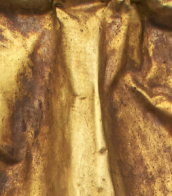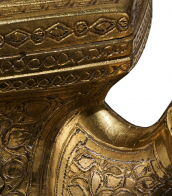tenned copper



Georg Baselitz is a German painter, sculptor and graphic artist. In the 1960s he became well known for his figurative, expressive paintings. In 1969 he began painting his subjects upside down in an effort to overcome the representational, content-driven character of his earlier work and stress the artifice of painting. Drawing from myriad influences, including art of Soviet era illustration art, the Mannerist period and African sculptures, he developed his own, distinct artistic language.


Oskar Schlemmer was a German artist, painter, sculptor, choreographer and designer, and was associated with the Bauhaus movement.
Schlemmer studied at the Kunstgewerbeschule in Stuttgart before becoming a student at the Bauhaus in Weimar in 1920. He taught at the Bauhaus from 1923 to 1929, and was the director of the theater workshop from 1924 to 1929. During this time, he developed a unique style that combined elements of sculpture, painting, and dance.
Schlemmer's work often explored the relationship between the human body and space, and he created a number of abstract figures and costumes for dance performances. He also created a series of sculptures and paintings that explored the idea of the "human condition" and the role of technology in society.
Schlemmer's work was considered controversial by the Nazis, who saw it as "degenerate art." He was forced to leave the Bauhaus in 1929, and his work was removed from public collections in Germany. Despite this, his work continued to be exhibited in Europe and the United States, and he is now considered one of the most important artists of the 20th century.












































































